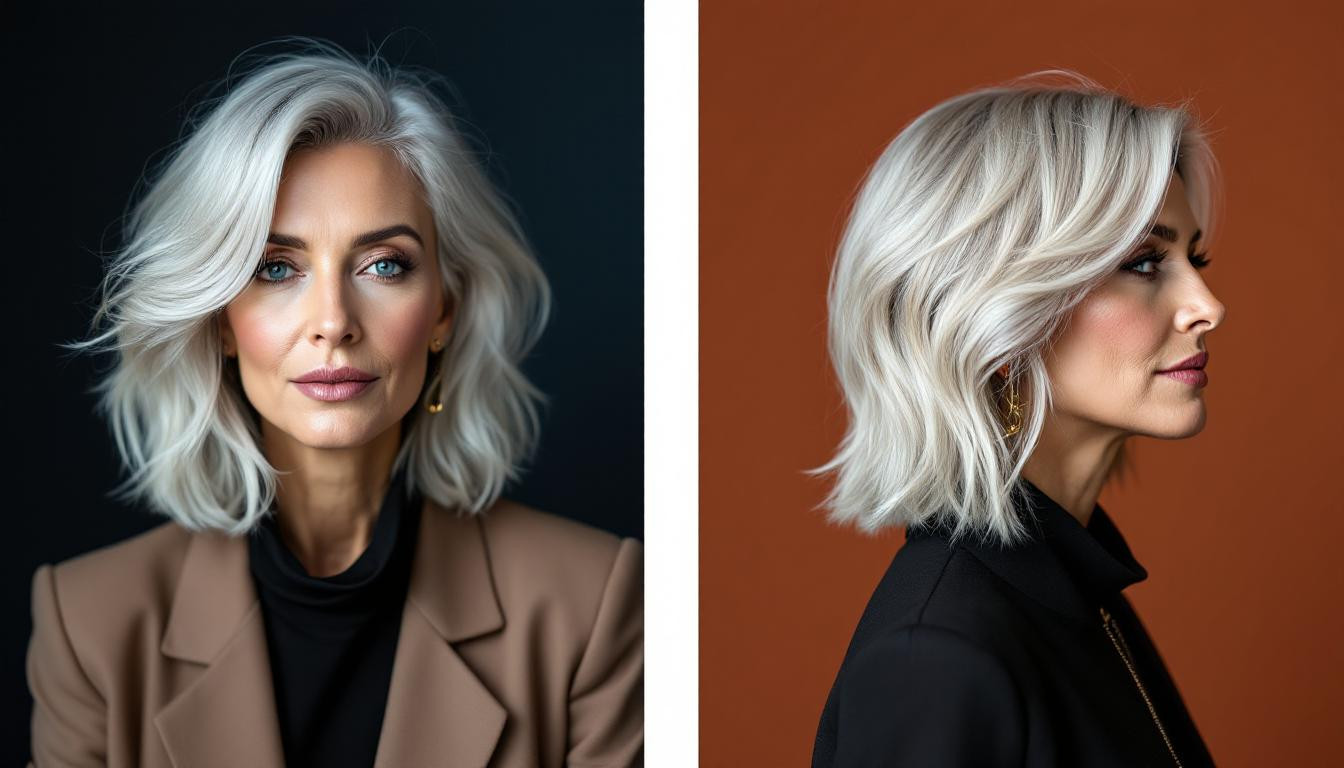Spring has arrived, and with it comes the perfect opportunity to refresh your hairstyle. For women over 60, choosing the right haircut isn’t just about following trends—it’s about embracing a style that enhances your natural beauty while addressing the changes your hair may be experiencing. Let’s explore how to select a flattering haircut that beautifully balances your features this spring 2025.
Understanding how hair changes after 60
As we mature, our hair undergoes several transformations. Hormonal changes often lead to thinner strands and decreased density, while texture typically becomes finer and more fragile. Understanding these shifts is the first step toward choosing a style that works with—not against—your hair’s natural evolution.
“The key to a flattering haircut after 60 isn’t about looking younger, but about highlighting your best features and creating the illusion of volume and movement,” explains renowned stylist Maria Collins. “The right cut can truly transform your entire appearance.”
Most flattering haircuts for spring 2025
The layered lob (long bob)
A shoulder-grazing lob with strategic layers creates instant dimension and movement. This versatile style adds significant volume to one-length styles and frames the face beautifully. The layering technique lifts hair at the crown, creating the appearance of fuller, more voluminous locks—perfect for spring’s fresh aesthetic.
Soft feathered cut
Feathery layers that gently frame the face can take years off your appearance while adding much-needed volume. “Feathered cuts are like architecture for aging hair,” says celebrity hairstylist James Burton. “They provide structure and movement where thinning might otherwise create flatness.”
Modern shag with curtain bangs
The shag has made a sophisticated comeback, and for women over 60, it offers the perfect balance of texture and volume. Paired with face-framing curtain bangs, this style works beautifully on all face shapes and adds considerable lift at the roots.
Tapered pixie
For those ready to embrace shorter lengths, a tapered pixie with textured layers on top creates a youthful, sophisticated look. This low-maintenance style is particularly flattering for highlighting cheekbones and eyes while minimizing attention to the neck area.
Matching haircuts to face shapes
Consider these guidelines when selecting your spring haircut:
- Oval faces: Most styles work well, particularly those with layers around the face
- Round faces: Styles with height at the crown and side-swept bangs create elongation
- Square faces: Soft layers and wispy edges soften angular jawlines
- Heart-shaped faces: Chin-length bobs or cuts with fullness at the jaw balance proportions
Spring styling tips for enhanced volume
Women over 70 have discovered that certain techniques can add up to 3 inches of volume with the right haircut. For maximum lift this spring:
- Use lightweight volumizing mousse on damp roots before styling
- Try a center part with the right cut to create natural volume
- Incorporate texture spray for dimension without weight
- Consider low-maintenance cuts that grow out beautifully
Color considerations for balanced features
This spring, consider how color can complement your new cut. Softer tones around the face create a natural highlight effect that brightens your complexion. Center-parted styles particularly benefit from dimensional color that enhances natural volume.
Embracing your best spring look
The perfect haircut after 60 isn’t about chasing youth—it’s about celebrating your current beauty with styles that make you feel confident and vibrant. This spring, partner with a skilled stylist who understands mature hair and can create a personalized cut that enhances your natural features while addressing any concerns.
Remember that the most flattering haircut is ultimately one that makes you feel like the best version of yourself—ready to embrace the renewal and fresh beginnings that spring represents.
